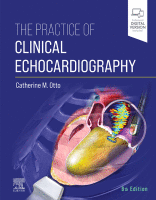Physical Address
304 North Cardinal St.
Dorchester Center, MA 02124

Acknowledgments The authors wish to acknowledge Anjali Vaidya, MD, and James N. Kirkpatrick, MD, the authors of related chapters in previous editions of The Practice of Clinical Echocardiography. The right ventricle (RV) is a complex but critical structure for normal…

Left ventricular diastolic dysfunction (LVDD) plays a major role in the pathophysiology of heart failure (HF). From a practical perspective, LV diastolic function assessment is particularly useful when evaluating patients with dyspnea of suspected or known cardiac origin. In patients…

Quantitative Analysis of LV Anatomy LV Size Linear Measurements The shape of the normal left ventricle (LV) corresponds to a prolate ellipsoid. Linear measurements of the LV therefore allow limited conclusions about its size and should not be used for…

Contrast echocardiography describes an array of techniques that produce acoustic enhancement of the blood pool during cardiovascular ultrasound imaging in order to improve the accuracy of conventional echocardiography or to create new diagnostic capabilities. A broad definition of contrast echocardiography…

In daily clinical practice, left ventricular (LV) function is commonly evaluated by two-dimensional (2D) echocardiography. The most widely used measure of global LV function is ejection fraction (EF), and regional function is evaluated by visual assessment of wall motion. LV…

Three-dimensional (3D) echocardiography (3DE) is one of the most important innovations in the field of cardiovascular ultrasonography. To maximize the information obtained from a 3DE data set, image acquisition and analysis should be performed with a deep understanding of the…